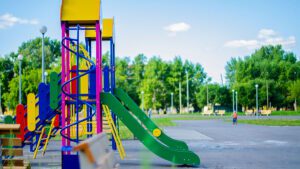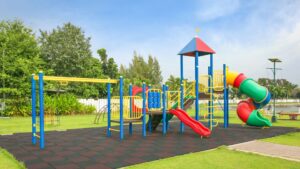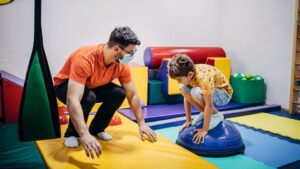Para diseñar un parque infantil de interior dinámico, seguro y rentable no basta con elegir los juegos. Es necesario conocer el mercado, el presupuesto, el espacio y las necesidades específicas de desarrollo de los niños. Esta guía le guiará paso a paso -desde la evaluación del clima y los datos demográficos hasta la elección de temas, diseños y equipamiento- para que pueda crear una zona de juegos de interior que haga las delicias tanto de los niños como de sus padres.
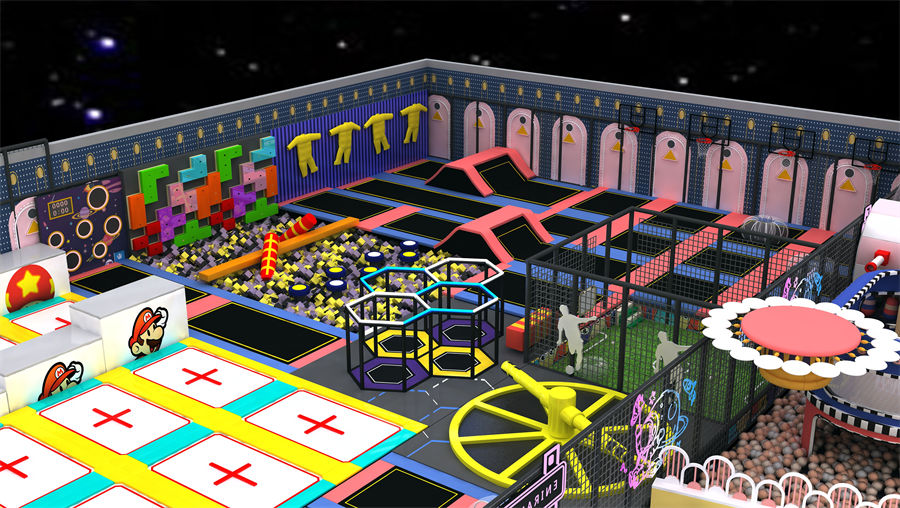
1. ¿Es el momento y el lugar adecuados?
Antes de invertir en equipamiento, investigue estos cuatro factores para asegurarse de que su parque infantil de interior tendrá éxito.
1.1 Patrones meteorológicos
- Todo el año Dom: En climas cálidos, los niños juegan al aire libre la mayoría de los días, lo que reduce la demanda de juegos de interior.
- Climas estacionales: Las regiones con inviernos fríos o estaciones lluviosas aumentan la necesidad de los padres de una opción de interior.
1.2 Demografía local
- Densidad familiar: Utilice los datos del censo o las encuestas locales para confirmar una alta concentración de hogares con niños pequeños.
- Desglose por edades: Adapte su equipamiento al grupo de edad predominante: niños pequeños (1-4), escolares (5-12) o mixtos.
1.3 Actos comunitarios
- Fiestas de cumpleaños y alquileres: Posicione su espacio como lugar de celebración de cumpleaños, de excursiones escolares o de actividades extraescolares.
- Necesidades especiales y clases: Ofrezca horarios adaptados a las necesidades sensoriales o clases de gimnasia para padres e hijos para ampliar el atractivo.
1.4 Fitness y competición
- Opciones existentes: Analice los gimnasios, parques de camas elásticas o parques infantiles al aire libre de la competencia en la zona.
- Punto de venta único: Tal vez se centren en juegos educativos, carreras de obstáculos al estilo ninja o una zona de juegos blandos para niños pequeños.
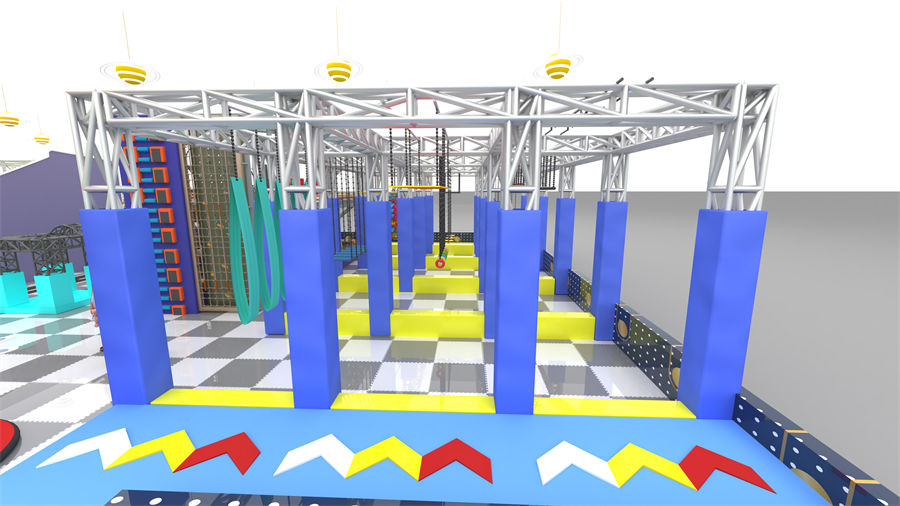
2. Presupuestos y financiación
Un presupuesto sólido protege contra los sobrecostes y mantiene la rentabilidad de sus instalaciones desde el primer día.
2.1 Fórmula de coste por niño
- Norma del sector: Asignar aproximadamente $1.000 por niño previsto en hora punta de capacidad.
- Ejemplo: Para 100 niños, prever $100.000 en gastos de equipamiento.
2.2 Tema y personalización
- Juegos temáticos: Los gráficos personalizados o las fachadas con personajes aumentan el atractivo, pero incrementan los costes en un 10-20%.
- Modular vs. A medida: Los sistemas modulares ahorran dinero; los diseños a medida son más caros.
2.3 Costes blandos
- Permisos y seguros: Hay que tener en cuenta los permisos locales de construcción, las inspecciones de seguridad y la cobertura de responsabilidad civil.
- Personal y formación: Planificar la incorporación y la formación continua en seguridad de los asistentes y supervisores.
2.4 Aplicación por fases
- Fase 1: Estructuras centrales (escalador, toboganes, piscina de bolas).
- Fase 2 (6-12 meses): Complementos como hinchables, circuitos ninja o zonas de juegos de realidad virtual.

3. Planificación y distribución del espacio
El trazado debe equilibrar la seguridad, la fluidez del tráfico y las zonas apropiadas para cada edad.
3.1 Altura del techo y superficie ocupada
- Distancia vertical: Por lo menos 12-16 pies para toboganes y paredes de escalada.
- Planta abierta: Mantenga una distancia de 6-8 pies entre las estructuras principales para evitar el hacinamiento.
3.2 Zonificación por edad y actividad
| Zona | Grupo de edad | Características |
|---|---|---|
| Rincón del niño pequeño | 1-4 años | Juegos de espuma blanda, mini toboganes, paneles sensoriales |
| Zona escolar | 5-12 años | Escaladores multinivel, carreras de obstáculos |
| Rincón de lectura | Todas las edades | Sacos de judías, libros, juegos tranquilos |
| Sala de padres | Adultos | Asientos, Wi-Fi, mostrador de cafetería |
3.3 Líneas de visión y supervisión
- Barreras bajas: Utiliza redes transparentes o paredes bajas para que el personal y los padres puedan vigilar a todos los niños.
- Registro central: Sitúe el mostrador de recepción en el corazón de las instalaciones para facilitar la supervisión.
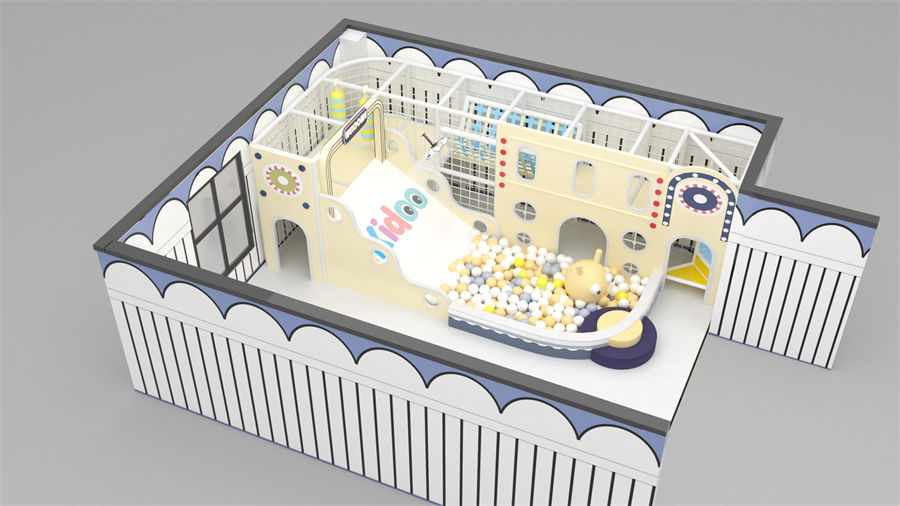
4. Definir la finalidad del parque infantil
Aclare cómo se utilizará su espacio para orientar la selección de equipos y la programación.
4.1 Exploración segura
- Superficies antideslizantes: Baldosas de caucho, fibra de madera o alfombrillas de espuma.
- Bordes redondeados: Todas las luminarias deben cumplir las normas de seguridad ASTM y CPSC.
4.2 Juego creativo y educativo
- Estaciones de juego de rol: Mini tiendas de comestibles, camiones de bomberos o consultas médicas.
- Paneles STEM: Rompecabezas sencillos, engranajes o paneles luminosos para despertar la curiosidad.
4.3 Habilidades sociales y emocionales
- Desafíos de equipo: Carreras de obstáculos en grupo o juegos cooperativos.
- Refugios tranquilos: Permita que los niños se autorregulen cuando se sientan abrumados.
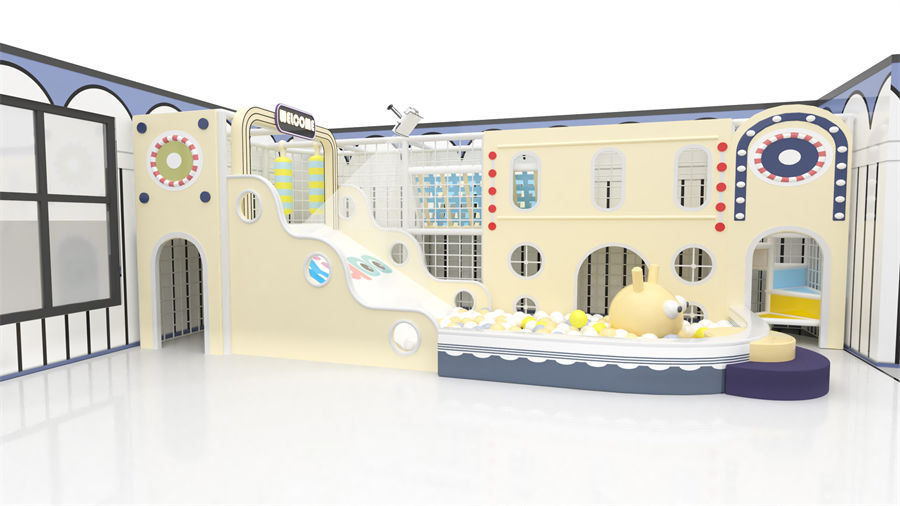
5. Elección de temas y estética
Un tema coherente hace que su zona de juegos sea memorable y digna de Instagram.
5.1 Paleta de colores
- Brillo y contraste: Utilice colores primarios llamativos para las zonas más jóvenes.
- Neutro y terroso: Tonos como el verde suave o los acabados en madera para salones de preescolar o familiares.
5.2 Integración de la marca
- Colores del logotipo: Haga eco de las tonalidades de su logotipo en murales de pared o estructuras de juego.
- Mascotas e iconos: Convierta la mascota de su marca en soportes de pared de silicona 3D o en espuma de escultura blanda.
5.3 Gráficos de pared y suelo
- Señalización: Zonas numeradas o huellas de animales que conducen de una zona a otra.
- Murales temáticos: Paisajes selváticos, submarinos, espaciales o urbanos para inspirar los juegos de simulación.
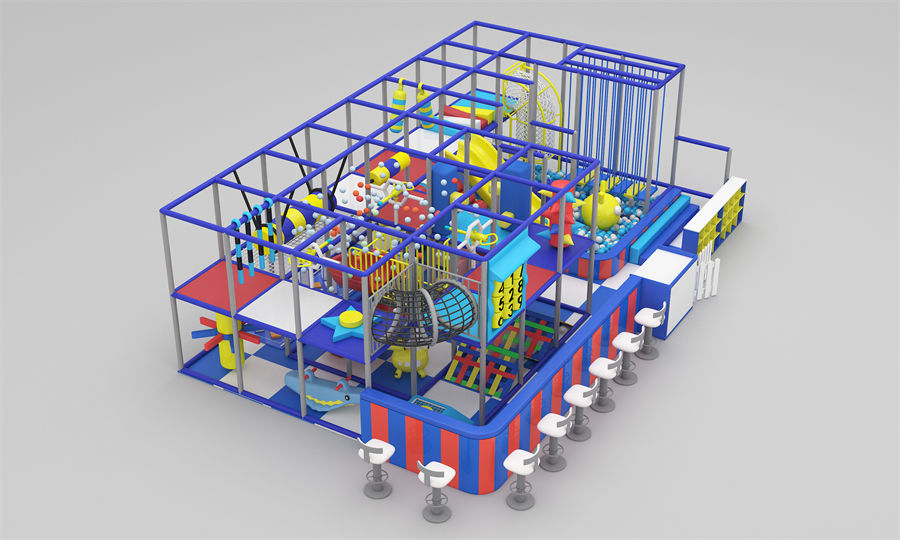
6. Equipamiento esencial por edad
Seleccionar las estructuras de juego adecuadas garantiza que todos los niños estén contentos y participen.
| Estructura | Beneficios | Lo mejor para |
|---|---|---|
| Bastidores de escalada | Motricidad gruesa, coordinación | En edad escolar |
| Formas de espuma blanda | Exploración segura, compromiso sensorial | Niños pequeños |
| Foso de espuma | Salto sin riesgo, desarrollo vestibular | Todas las edades |
| Zona de trampolines | Aptitud cardiovascular, equilibrio | Edad escolar, Adolescentes |
| Obstáculo/Guerrero ninja | Agilidad, resolución de problemas | Edad escolar, Adolescentes |
| Pueblos de juego de rol | Habilidades sociales, juego imaginativo | Preescolar, edad escolar |
| Paneles sensoriales | Estimulación táctil y auditiva | Niños pequeños |
| Muros de juegos interactivos | Desafíos cognitivos, competición en grupo | En edad escolar |
7. Seguridad y mantenimiento
Un parque infantil limpio y bien mantenido hace que las familias vuelvan y minimiza las responsabilidades.
7.1 Controles diarios
- Piezas sueltas: Inspeccione los pernos, la tensión de la red y las correderas en busca de grietas.
- Superficies limpias: Limpie las zonas de mayor contacto con un desinfectante seguro para los niños.
7.2 Auditorías semanales
- Integridad del suelo: Asegúrese de que las baldosas de gomaespuma o la superficie de caucho queden enrasadas y sin arrugas.
- Desgaste del equipo: Busque cuerdas deshilachadas, pintura descolorida o astillas.
7.3 Inspecciones profesionales trimestrales
- Integridad estructural: Contrate a un inspector certificado de parques infantiles para que realice una auditoría en busca de peligros ocultos.
- Certificación de seguridad: Mantenga registros del cumplimiento de las normativas ASTM, CPSC y locales.
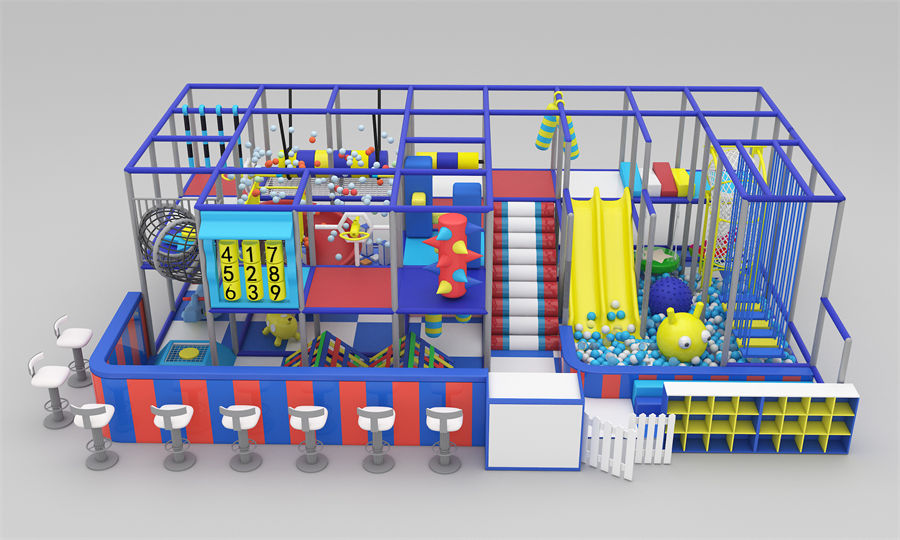
8. Personal y programación
Un personal amable y formado y programas atractivos convierten su parque infantil en un próspero centro comunitario.
8.1 Formación de los asistentes
- Primeros auxilios y RCP: Certificación obligatoria para todo el personal de primera línea.
- Supervisión infantil: Estrategias de gestión de multitudes y resolución de conflictos.
8.2 Actividades programadas
- Hora de cuentos y música: Eventos en zonas tranquilas para niños pequeños y cuidadores.
- Desafíos temáticos: Noches Ninja" o "Aventuras Piratas" semanales para fomentar la repetición de visitas.
8.3 Afiliación y fidelidad
- Pases mensuales: Acceso ilimitado para visitantes frecuentes.
- Paquetes de cumpleaños: Menú escalonado de complementos para la fiesta (pizza, bolsas de regalos, anfitrión dedicado).

9. Comercialización de su parque infantil cubierto
Un marketing eficaz garantiza que su parque infantil de interior siga siendo el centro de atención de familias y organizadores de eventos.
9.1 Presencia digital
- Sitio web optimizado para SEO: Incluya palabras clave como "parque infantil cubierto cerca de mí", "zona de juegos cubierta".
- Redes sociales: Comparta fotos, testimonios familiares y próximos eventos en Instagram y Facebook.
9.2 Relaciones con la Comunidad
- Asociaciones escolares: Ofrezca descuentos en programas extraescolares.
- Eventos locales: Patrocine ferias comunitarias u organice jornadas lúdicas benéficas.
9.3 Reseñas y listados en línea
- Google My Business: Mantenga actualizados los horarios, las fotos y la información de contacto.
- Blogs y directorios sobre paternidad: Anime a las familias satisfechas a dejar comentarios positivos.
El diseño de un parque infantil cubierto requiere una cuidadosa consideración de la demanda del mercado, las limitaciones presupuestarias, la planificación del espacio, las normas de seguridad y los elementos temáticos. Zonificando las áreas por edades, seleccionando equipos adecuados a cada edad y realizando rigurosos controles de seguridad, creará un destino atractivo y rentable que encantará a las familias, llueva o truene.
¿Listo para empezar a planificar? Utilice las listas de comprobación y los consejos de esta guía para hacer realidad su visión y vea cómo su centro de juegos interior se convierte en el lugar favorito de las familias de la comunidad.

